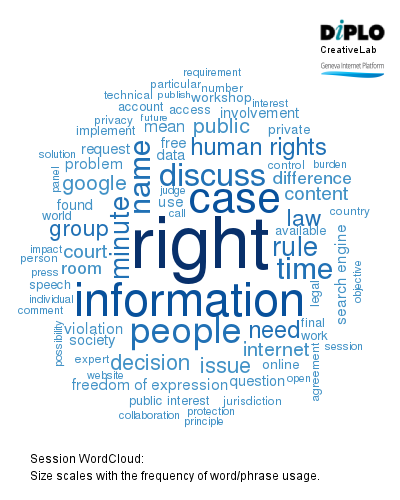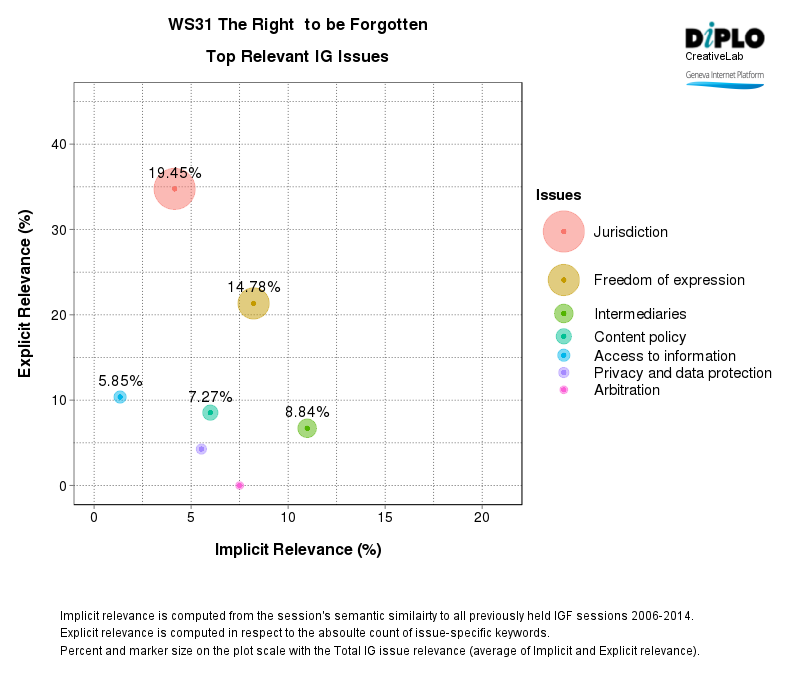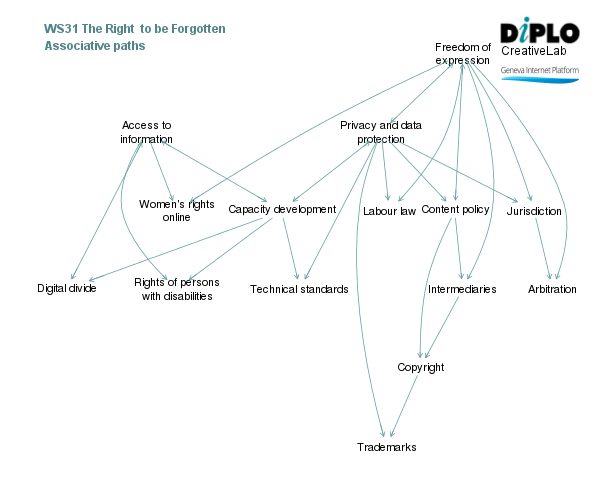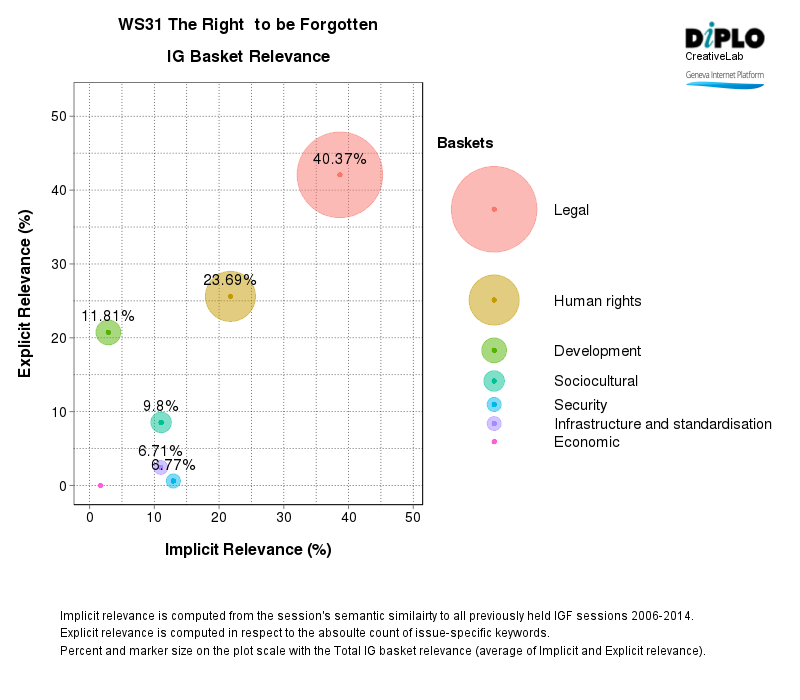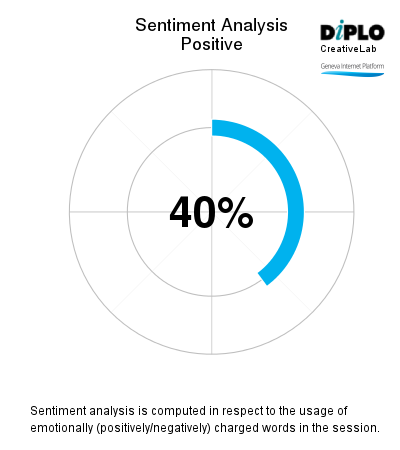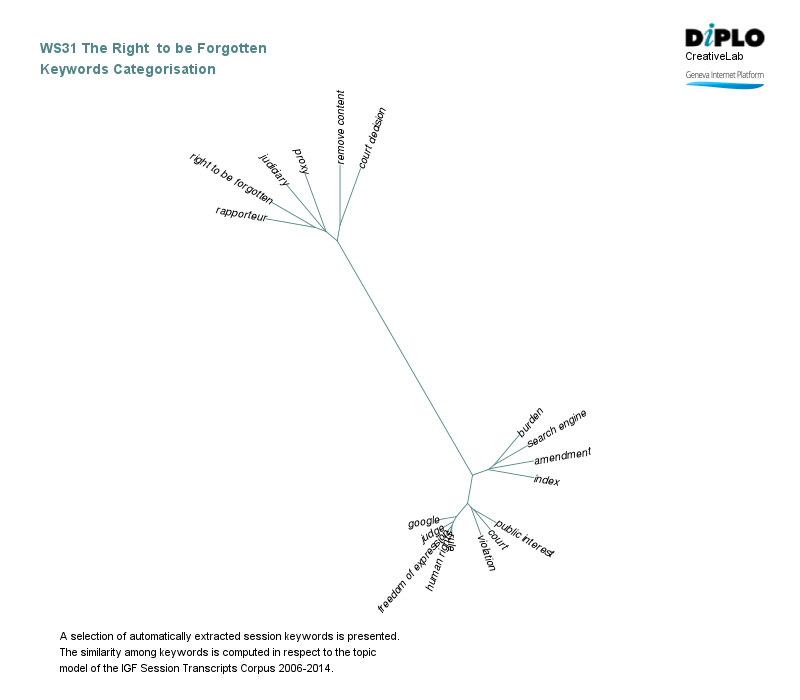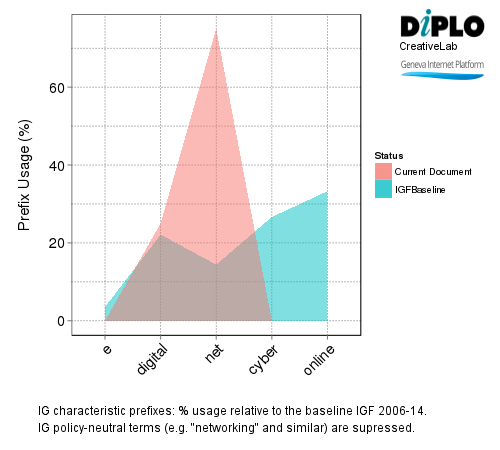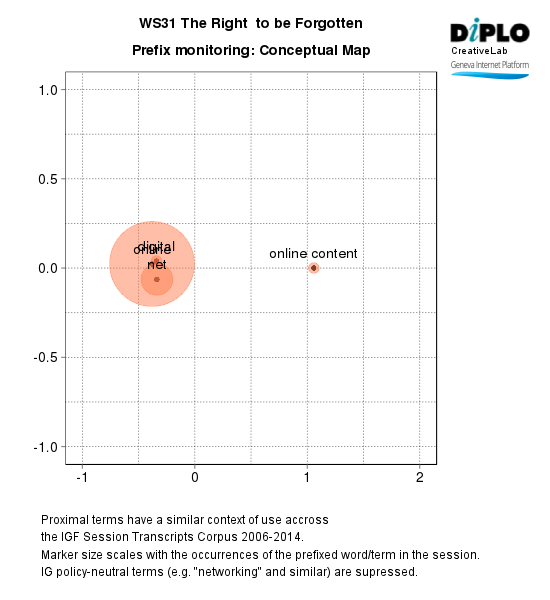Cases on the right to be forgotten, what have we learned?
11 Nov 2015 16:00h - 17:30h
Event report
The aim of this workshop was to draw out some lessons for civil society to consider whilst working on going forward in the aftermath of the creation of the “right to be forgotten”.
Three key points clearly emerged from the session:
-
1. The term “Right to be forgotten” is problematic
-
2. Policy makers and the judiciary need a better understanding of technology
-
3. There is a need to educate the public on the possible dangers surrounding this issue
Kelly Kim, from Korea, explained that Korea is considering introducing a new right to be forgotten law. She described how existing legislation is already being used by people who want to have embarrassing information about them removed, even when that information is true.
Gisella, from Mexico, provided an account of how democracy is very linked to memory in Mexico due to the country’s authoritarian past. The right to be forgotten threatens that.
Pedro, from Columbia, stated that the right to be forgotten is linked to freedom of the press and is not a new issue. The desire to have information deleted or de-linked is due to someone being “upset” by something that has been published.
Pedro explained how a controversial ruling by the Constitution Court of Columbia may place an undue burden on media houses, particularly small ones, to continually update published stories. He emphasized that there is a clear need for authorities to have specific knowledge of technology to avoid poor decision and policy making.
Harold Feld expressed his view that in all jurisdictions where take-down notices are implemented, the process is abused in order to silence free speech. As the reversal process takes time, it is possible to disrupt conversation and skew decision making processes.
By Ashell Forde
Session Analytics
Session analytics on Digital Watch are produced from computational text-mining and statistical modeling of the IGF session raw transcripts.
All analytics are produced from DiploFoundation’s Text-Analytical Framework (DTAF).
Related topics
Related event


